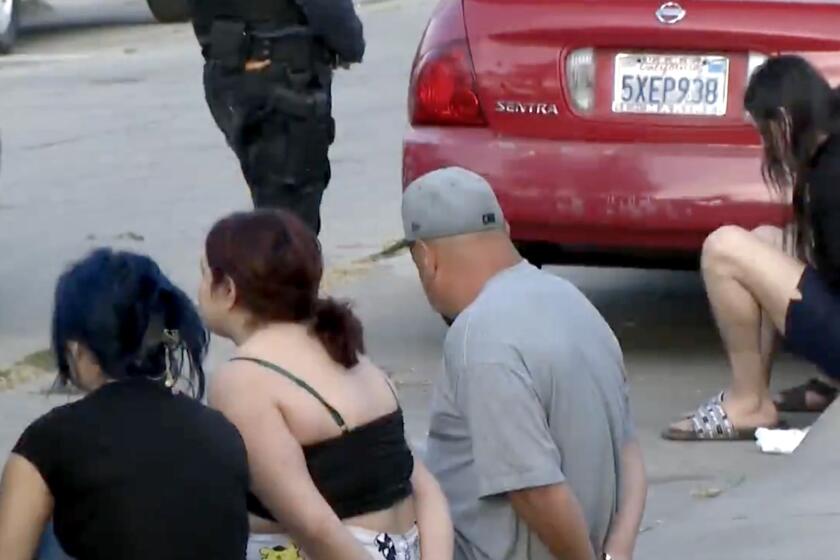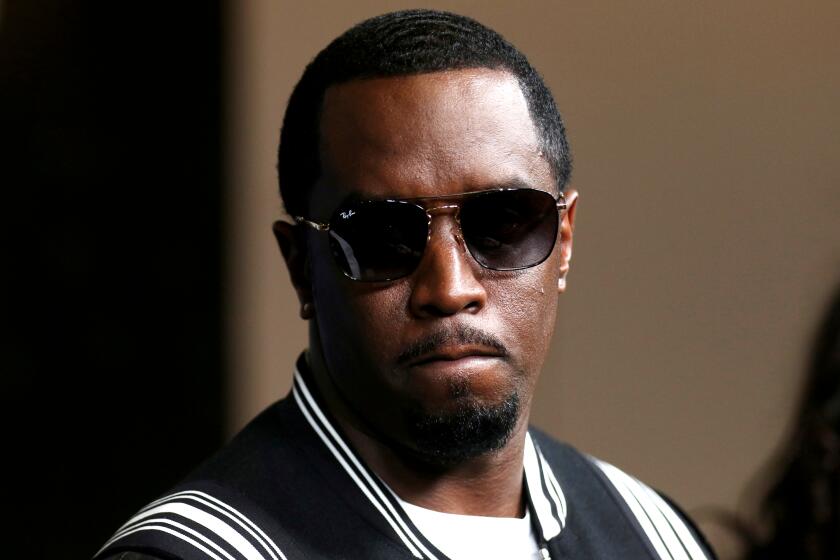Opinion: Cardinal Burke: Serving at Mass is a ‘manly’ job
Cardinal Raymond Burke, the conservative former archbishop of St. Louis who was demoted from a top Vatican position by Pope Francis, is back in the news.
The cardinal, who is equally well known for his hard line against giving Holy Communion to pro-choice Catholic politicians and his love of ecclesiastical finery, gave an interview to an organization called the New Emangelization Project. That’s right, E-MAN-gelization, not Evangelization. The group was formed to confront what it calls a “man crisis” in the Catholic Church.
In the interview, Burke is sympathetic to the group’s concerns that men are being driven from the pews because of the “feminization” of the Catholic Church.
In addition to decrying “radical feminism,” Burke criticizes the recent practice of allowing girls to serve as acolytes at Mass and other church ceremonies. “The introduction of girl servers also led many boys to abandon altar service,” Burke said. “Young boys don’t want to do things with girls. It’s just natural. The girls were also very good at altar service. So many boys drifted away over time.”
Burke adds that it requires a “certain manly discipline to serve as an altar boy in service at the side of a priest, and most priests have their first deep experiences of the liturgy as altar boys. If we are not training young men as altar boys, giving them an experience of serving God in the liturgy, we should not be surprised that vocations have fallen dramatically.”
The idea that a “feminized” post-Vatican II church has alienated men is a commonplace of conservative Catholic thought. It’s an extension of the Catholic notion of the “complementarity” of the sexes, which assumes that men and women have different, divinely ordained natures. (Pope Francis addressed a conference last year on the “Complementarity of Man and Woman.”)
But there is one aspect of Burke’s analysis that had me scratching my head: His linking of service at Mass (especially the traditional Latin Mass with its well-choreographed ceremonial) to stereotypical notions of masculinity. The idea that elaborate Catholic rituals appeal mostly to “manly men” conflicts with a lot of scholarship and personal testimonies.
In the 19th century, when some priests of the Church of England revived vestments, incense and other trappings of Catholic worship, they were denounced as “un-English and unmanly” (the title of a fascinating article by David Hilliard). The satirical magazine Punch wrote that these “Anglo-Catholic” clergymen “are very fond of dressing like ladies. They are much addicted to wearing vestments diversified with smart and gay colors, and variously trimmed and embroidered.” One can only imagine what Punch would say about some of Burke’s outfits.
The old gibe that priests are “men in dresses” is not only anti-Catholic but also arguably homophobic. But there is also a much more sympathetic take on what one writer called “the esthetic synchronicities between Christian culture and gay sensibilities, especially in the old-line traditions like Catholicism.”
Obviously you don’t have to be gay to be moved by the splendid ceremonial of traditional Catholic worship; but it’s evident from a wealth of autobiographical literature that the “smells and bells” of the old Mass appealed to a lot of boys who didn’t think of themselves as “manly men.” Would Burke suggest that they too shouldn’t serve Mass?
Follow Michael McGough on Twitter @MichaelMcGough3
More to Read
A cure for the common opinion
Get thought-provoking perspectives with our weekly newsletter.
You may occasionally receive promotional content from the Los Angeles Times.











